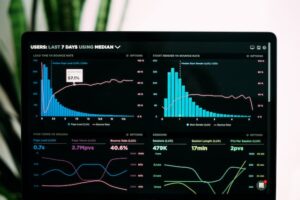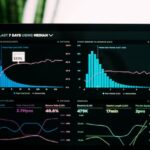Are You a Prospector?
 When talking to sales and marketing people and you ask “Are you a prospector” people, somewhat naturally think “sales prospecting.
When talking to sales and marketing people and you ask “Are you a prospector” people, somewhat naturally think “sales prospecting.
From a business perspective, there are at least four types of prospectors. There are:
- Sales Prospectors. These are “hunter-oriented” salespeople who continuously prospect for new accounts. You can identify them by the number of outbound calls and/or new customers that they develop. They differ from “farmers” or account management oriented salespeople who are focused on serving their existing account base. While “high quality farmers” mine their accounts to seek opportunities, like in most things, this probably represents 10-20% of “farmers”.
- Marketing Prospectors. These individuals are always asking “why” and are seeking new opportunities. They may look at things “differently”; they may seek to “peel back layers of an onion” or may gather research (internally or externally) to generate or validate ideas. They are always seeking “new” and more. They are strategically creative.
- Financial Prospectors. These are the accounting / finance folks who know where the first dollar, maybe even penny, is buried and can analyze financials down to the multiple decimal points. They know the business numbers like the back of their hand. The good ones understand how to convert this information into commercial outcomes to benefit the business. They help companies mint money while benefiting all stakeholders.
And then there are the Data Prospectors.
These individuals “love” data. In some companies they are called data analysts; others call them financial or market / marketing analysts; or maybe just “analyst”. Some of them are “data / number junkies” but they are experts in Power BI, Tableau or Crystal Reports. Within distributors they may be your Phocas or MITS power users. They know how to generate reports and, more importantly, create reports! The best can review the reports, ask “why” and seek additional insights. And the cream of the crop convert the information into insights and actionable recommendations or can work with teams to make the information actionable.
These individuals will, inevitably, become the foundation for AI initiatives as AI algorithms are built upon data.
And one of the biggest, albeit smartest, data “geek” who understands what the information means for electrical distributors and manufacturers (in other words, realistically, what to do with the information) is Mark McGready. Mark’s been in the electrical industry for 25 years so has 1) seen much and 2) understands a few sides of the business. It’s also why NAED has tapped into his expertise to lead their Data Analytics initiatives. While there are things he’s working on, his vision was the impetus for NAED’s upcoming Data Analytics conference.
To get a sense of “why”, I reached out to Mark to solicit his thoughts:

Mark the Data Prospector
The lonely life of a Data Prospector
It’s a tough life on the frontier. Every morning data analysts wake up, grab their equipment and set off to the mine to see what they might discover that day. They dig and dig, look for new trails, and hope to pull out some nugget of intelligence that can change their fortunes. There’s no map, no easy way to go about it, and for most they’re on their own. However that may be about to change.
The term data scientist is fairly recent. When I was young you could learn all about chemistry, biology, astronomy, sociology, zoology, ecology, archeology – a long list of ologies, but there was no dataology. It wasn’t really a thing, in part because having large sets of data to study were rare. Millions of records were tough to handle. They were stored on tape and programs to unlock them took hours to write and hours to run. Back in the old days, before iPhones and Google, data was simply measurement. How much, how few, it was the barometer of business. If you were good at numbers your job was to tell others what the numbers were, maybe even what they meant. It was all we had, and all we could do. Then computers got faster, internet got smarter, chips got more complex and soon we found ourselves living in the world of big data.
Big data has a lot to live up to, and in many places it’s exceeded expectations. In the retail world we once marveled at ideas of having prices shift as demand shifts, but these days that’s the basic stuff. Most retailers model the buying patterns of each individual customer. If you use a store card the machine knows everything about you. If you watch YouTube you have your own personal algorithm. Netflix knows what you’ll watch before you do – or at least that’s the goal.
You see data science is probably the wrong term. It’s pattern science, the ability to find the beat and rhythm within the numbers like hearing the base guitar in your favorite band. Once you have a pattern, you have predictability, you have a trend, and once you can measure a trend you can decide if it’s good or bad, and what should be done different. Small changes in trends compound into very real results. As a result data science is one of the hottest career paths for college bound minds, and in many industries ‘the data’ has a seat in the boardroom. Decisions are made according to ‘the data’. It’s not quite Skynet, but the machine overlords are already here.
Unfortunately we work in an industry where patterns are rarer. And that’s why data science is still in it’s infancy. Half of what we sell is sold as unique lot jobs, each its own special snowflake. Two thirds of what we sell is at a negotiated price, and that negotiation is as human and chaotic as any market force. Look under the hood of any manufacturer and distributor and you’ll see a whole lot of chaos, and then the last few years have turned the chaos up to 11. So our hardy data prospectors face an arduous task, navigating markets that might not have patterns, business dynamics that change with the wind. It’s why we haven’t been able to plunder workers from retail and plugged them into our computers. The retail model relies on customers that behave the same. Netflix can predict what you might want to watch as it’s got 10 million viewers like you, so it can identify your type. We sell in an industry where some customers behave like retail – residential contractors – but the rest become more and more unique the further we delve.
I have been doing data analytics for 25 years now, and I still get surprised. I’m still discovering new patterns, things I’ve never seen before. So I have all the sympathy in the world for people starting out in the data analysis world. Whether it be operational scorecards, price analysts, marketing gurus, web store trackers or purchasing professionals, this is a difficult industry to understand and find patterns within. However, they’re there, they’re everywhere, all you need to know is where in the mine you can find them.
NAED are holding their first data insights conference this October in Dallas (https://www.naed.org/data-insights-conference). It’s intended to allow the individual data analysts working in the industry to come together for the first time. To share war stories, to learn new ideas, to compare scars and the not be lonely prospectors but rather find their peers and improve in the way networking allows. There will be a series of speakers over two days giving their expertise, guidance and each session will have workshops to help the ideas sink in. I’ll be one of them, speaking about calculating the cost to serve of an order, and how that measure might inform how you sell, how you price and how you support customers.
Data analytics will steer the successes of the next decade. With companies selling similar products, at similar prices, with similar techniques, the difference is in the details, and the details are in the data. Those who discover rich patterns that can steer their fortunes will be more prosperous, with all the advantages that brings. If you have a role in data analytics, or you see the need for more within your organization, I highly encourage you to come along. At the very least meet your fellow miners and learn from their successes and struggles. Who knows, you might come away with a map to all those nuggets just waiting to be discovered.
About Mark McGready – I’ve been doing data analytics in the electrical industry for the past 25 years, for manufacturers, distributors and as a service provider (Jigsaw Systems). Currently I divide my time between NAED (as their Data Insights Advisor) and SparxIQ (as their Director of Channel Analytics). After all this time I’m still discovering new applications for data analytics and how they can reveal unknown truths about our industry.
Thoughts
According to Mark NAED is on-track to meet its participation goal for this conference. Being a new discipline in many distributors, it may be a small but hardy group. As Mark says, the first step is identifying a community where a group of like-minded people can network and share ideas. In other words “data geeks talking to data geeks!”
At the end of the day, the only value in analyzing data is to generate improved profitability and, for most companies, this is a focus on how to increase sales and profitability, with sales typically being the first, second and third goal.
I’ve shared with clients that “Data is nice. Data aggregated is information. Information analyzed in knowledge. Knowledge applied creates opportunities and power.”
For our clients we’ve developed a list of 10-12 data points to consider as you evaluate your business. Some help identify growth opportunities; some are early warning indicators. If you’d like a copy, email me.
And if you have a “data geek” in your business or want to learn more about the benefits of data analytics, I’d encourage you / your company to attend the NAED Data Analytics Conference and seek out Mark (literally, call / email him and book some time with him … it will be worth the conference fee.)
Through analytics your company can become a prospector.























